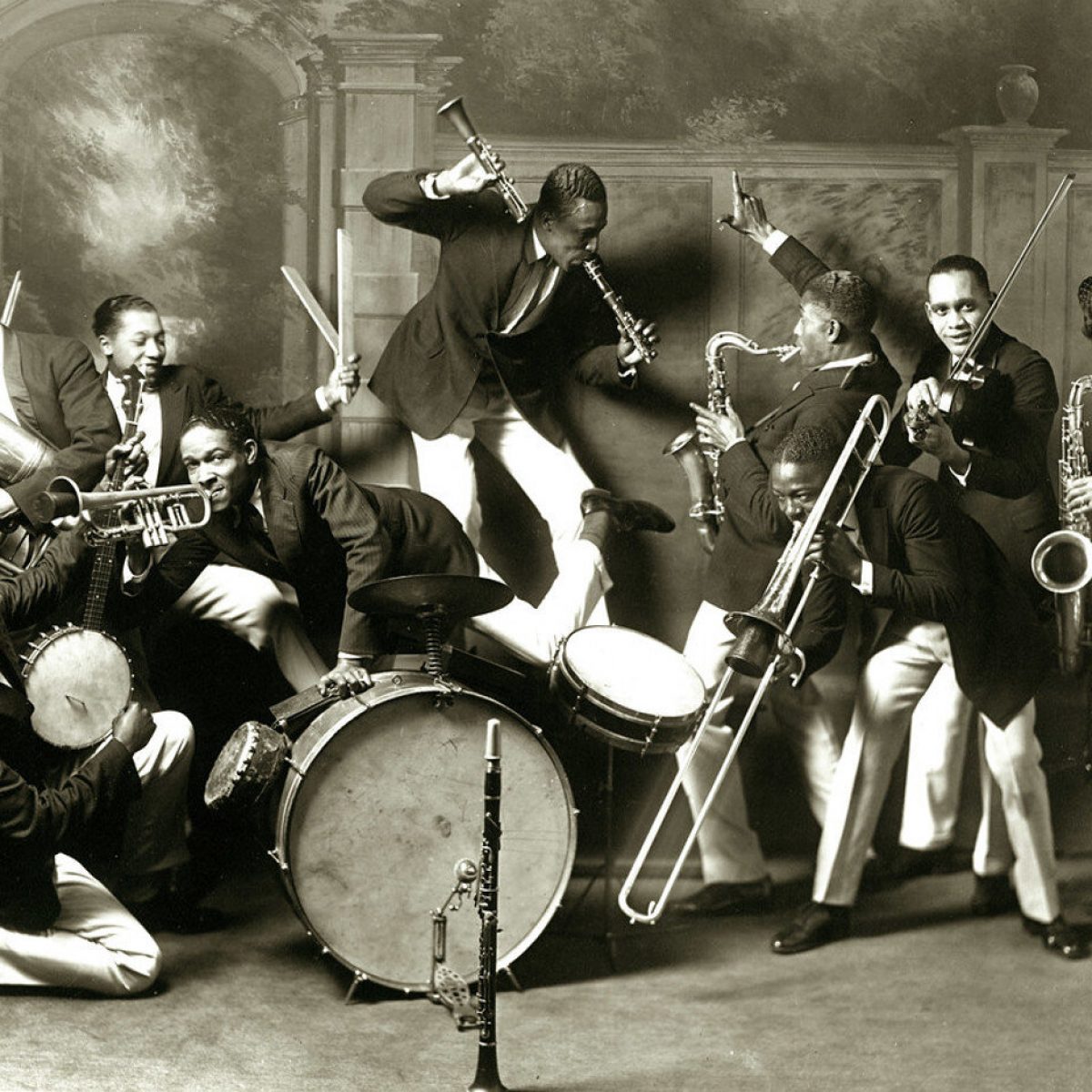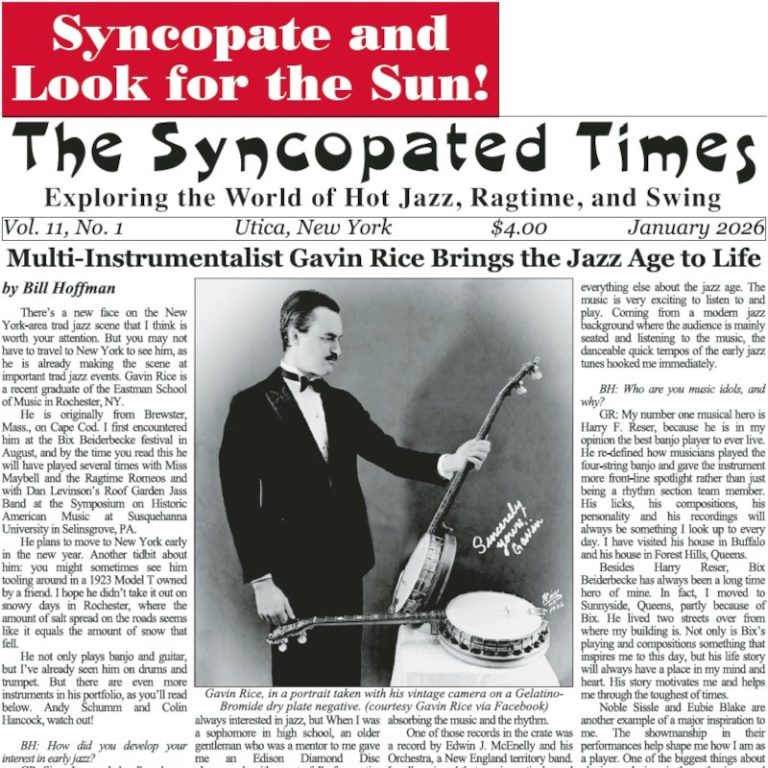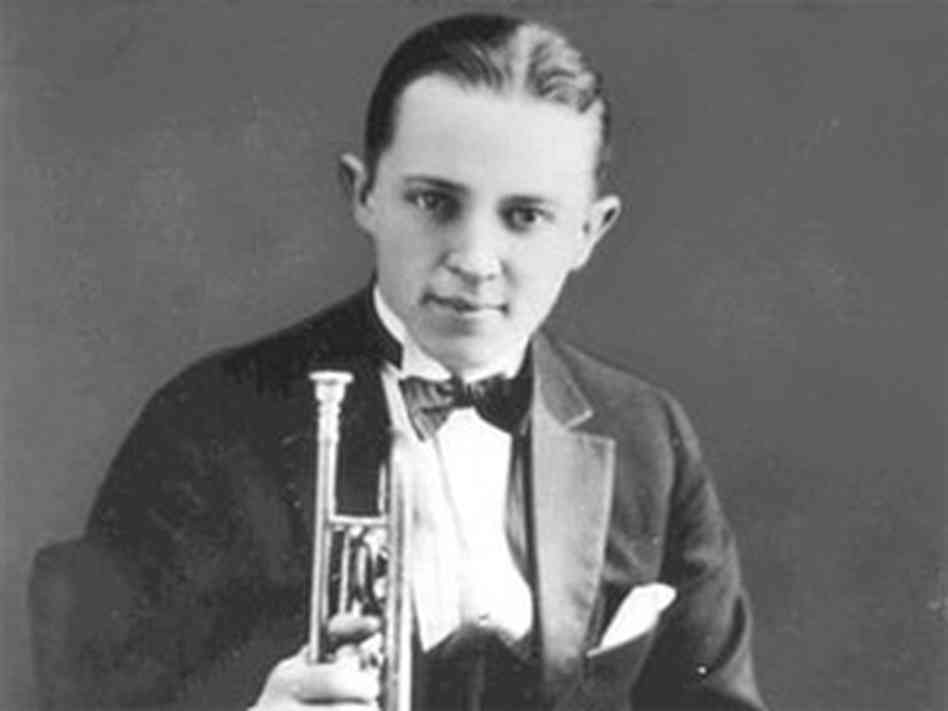 Bix Beiderbecke (March 10, 1903 – August 6, 1931) was one of the great jazz musicians of the 1920’s; he was also a child of the Jazz Age who drank himself to an early grave with illegal Prohibition liquor.
Bix Beiderbecke (March 10, 1903 – August 6, 1931) was one of the great jazz musicians of the 1920’s; he was also a child of the Jazz Age who drank himself to an early grave with illegal Prohibition liquor.
His hard drinking and beautiful tone on the cornet made him a legend among musicians during his life. The legend of Bix grew even larger after he died.
Bix never learned to read music very well, but he had an amazing ear even as a child. His parents disapproved of his playing music and sent him to a military school outside of Chicago in 1921. He was soon expelled for skipping class and became a full-time musician.
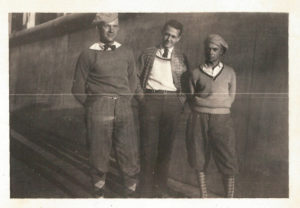
(photo courtesy Great American Songbook Foundation)
In 1923 Beiderbecke joined the Wolverine Orchestra and recorded with them the following year. Bix was influenced a great deal by the Original Dixieland Jass Band, but soon surpassed their playing.
In late 1924 Bix left the Wolverines to join Jean Goldkette‘s Orchestra, but his inability to read music eventually resulted in him losing the job. In 1926 he spent some time with Frankie Trumbauer‘s Orchestra where he recorded his solo piano masterpiece  “In a Mist”. He also recorded some of his best work with Trumbauer and guitarist, Eddie Lang, under the name of Tram, Bix, and Eddie.
“In a Mist”. He also recorded some of his best work with Trumbauer and guitarist, Eddie Lang, under the name of Tram, Bix, and Eddie.
Bix was able to bone up on his sight-reading enough to re-join Jean Goldkette’s Orchestra briefly, before signing up as a soloist with Paul Whiteman’s Orchestra. Whiteman’s Orchestra was the most popular band of the 1920’s and Bix enjoyed the prestige and money of playing with such a successful outfit, but it didn’t stop his drinking.
In 1929 Bix’s drinking began to catch up with him. He suffered from delirium tremens and he had a nervous breakdown while playing with the Paul Whiteman Orchestra, and was eventually sent back to his parents in Davenport, Iowa to recover.
It should be noted that Paul Whiteman was very good to Bix during his struggles. He kept Bix on full pay long after his breakdown, and promised him that his chair was always open in the Whiteman Orchestra, but, Bix was never the same again, and never rejoined the band.
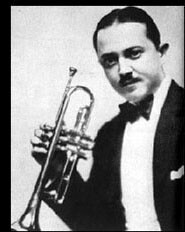 He returned to New York in 1930 and made a few more records with his friend Hoagy Carmichael and under the name of Bix Beiderbecke and his Orchestra. But mainly, he holed himself up in a rooming house in Queens, New York where he drank a lot and worked on his beautiful solo piano pieces “Candlelights“, “Flashes”, and “In The Dark” (played here by Jess Stacy (“Candlelights”) and Ralph Sutton; Bix never recorded them).
He returned to New York in 1930 and made a few more records with his friend Hoagy Carmichael and under the name of Bix Beiderbecke and his Orchestra. But mainly, he holed himself up in a rooming house in Queens, New York where he drank a lot and worked on his beautiful solo piano pieces “Candlelights“, “Flashes”, and “In The Dark” (played here by Jess Stacy (“Candlelights”) and Ralph Sutton; Bix never recorded them).
He died at age 28 in 1931 during an alcoholic seizure. The official cause of death was lobar pneumonia and edema of the brain.
For more information about Bix check out the Bix Beiderbecke Resources A Bixography
| Bix Beiderbecke and his Rhythm Jugglers | Bix Beiderbecke and his Gang |
| Bix Beiderbecke and his Orchestra | |
| Title | Recording Date | Recording Location | Company |
| In A Mist (Bixology) (Bix Beiderbecke) |
9-9-1927 | New York, New York | Okeh 40916 Vocalion 3150 |
| Bix; Man And Legend, by Richard M. Sudhalter and Philip R. Evans, Arlington House Publishers, 1974 |
| Bix; The Leon Bix Beiderbecke Story, by Philip R. Evans and Linda K. Evans, Prelike Press, 1998 |
| Remembering Bix, by Ralph Berton, Harper & Row, 1974 |
| Bix: The Definitive Biography Of A Jazz Legend, by Jean Pierre Lion, Continuum Publishers, 2004 |
| Bix Beiderbecke by Burnett James, Cassell & Co, Ltd., 1959 |
| Sometimes I Wonder by Hoagy Carmichael and Stephen Longstreet, Farrar, Straus, and Giroux, 1965 |
| The Stardust Road by Hoagy Carmichael, University of Indiana Press, 1946 |
| Bugles for Beiderbecke by Charles Wareing and George Garlick, Sidgwick and Jackson Limited, London, 1958 |
| The Bix Bands: A Bix Beiderbecke Disco-biography by Vittorio Castelli, Evert, Ted Kaleveld, and Liborio Pusateri. Raretone, Milan, 1972 |
| La vita e la leggenda di Bix Beiderbecke” by Aldo Lastella, Nuovi Equilibri S.R.L., Roma, 1991 |
| Bix Beiderbecke: Sein Leben, Seine Musik, Seine Schallplatten by Klaus Scheuer, Waakirken-Schaftlach, Oreos Verlag, Germany, 1995 |
| Bix Beiderbecke: Jazz Age Genius by David R. Collins, Morgan Reynolds, Inc., Greensboro, North Carolina, 1998 |
Redhotjazz.com was a pioneering website during the "Information wants to be Free" era of the 1990s. In that spirit we are recovering the lost data from the now defunct site and sharing it with you.
Most of the music in the archive is in the form of MP3s hosted on Archive.org or the French servers of Jazz-on-line.com where this music is all in the public domain.
Files unavailable from those sources we host ourselves. They were made from original 78 RPM records in the hands of private collectors in the 1990s who contributed to the original redhotjazz.com. They were hosted as .ra files originally and we have converted them into the more modern MP3 format. They are of inferior quality to what is available commercially and are intended for reference purposes only. In some cases a Real Audio (.ra) file from Archive.org will download. Don't be scared! Those files will play in many music programs, but not Windows Media Player.


